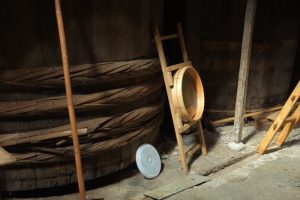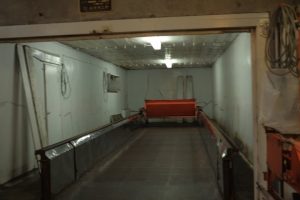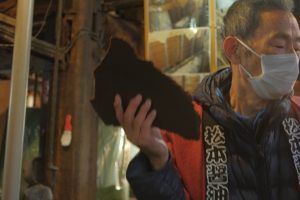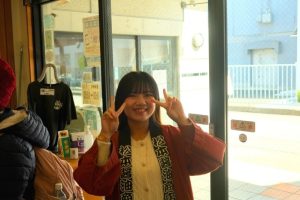The GSEP Off-Campus Project is an annual extracarricular activity, which aims to provide students with a unique opportunity to experience Japanese engineering and its history through site visits. For the Project of Academic Year 2023, GSEP students and faculty went off campus to visit various locations in the North Kanto region from February 27th to 29th.
In this series of 6 episodes, we hope to share the students’ experiences, discoveries and insights that they gained through their journey. The first episode is written by Phraewa Saengaroon, a 3rd year GSEP student from Thailand, about her visit to Matsumoto Craft Soy Sauce in Kawagoe, Saitama:

“I will be writing in detail about my experiences at the Matsumoto Craft Soy Sauce Factory in Kawagoe, Saitama. Soy sauce is directly tied to Japan’s food culture and is integrated into most Japanese cuisine bringing out the flavor of ‘Umami’. The Matsumoto Soy Sauce dates back to 1764 since they began their craft. The barrels used for fermentation aged over 180 years with their practice. In the current society of industrialization, a lot of food products including soy sauce, are being manufactured by large commercial machines, losing the potential to bring the maximum flavor out of the soy sauce. However, Matsumoto’s soy sauce remains traditionally handcrafted which brings out a rich flavor unlike those distributed in supermarkets.

Next, let’s see the process of the Matsumoto soy sauce crafting. The two fundamental key ingredients in making soy sauce are soybeans and wheat. These two ingredients are fermented for a designated time with optimal temperature to form Koji (A type of mold commonly used for starters on sauce) in a tightly sealed container. Once the Koji is fully fermented, it is then processed, ground, and mixed with water ready to develop.
After the developing time, the mixture will then be pressed to separate large chunks of the Koji mixture and the liquid. The by-product is called Shoyu Shibori which will be sold to cattle farms as food. However, it is not recommended for cows to ingest too much as it contains a high concentration of sodium (though the cows are fond of the taste!). What is special about Matsumoto’s Factory is that their soy sauce is fermented for 2 years which sets a big difference to the commercial companies shortening the fermenting time to only 4-6 months.

The students were then able to taste test the flavor of the 2 years fermented soy sauce and I think the time made a difference in the taste. I could feel the flavors of the soy sauce in-depth with such a rich flavor that was different from the ones I got from the supermarket. During the questionnaire, the owner shared that even though they can make such delicious soy sauce, the production speed does not meet their demands, showing that the introduction of commercializing products can outweigh traditional ones.”

